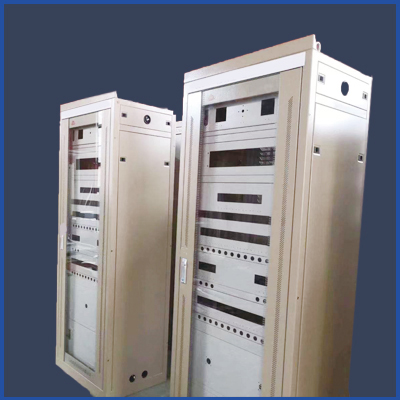低压配电柜的设计原则和技术要求
发布时间:2024-02-28来源://www.aqfitlab.com/浏览量:
低压配电柜是用来分配、控制和保护电能的设备,广泛应用于工业、商业和居民建筑中。其设计原则和技术要求主要包括以下方面:
Low voltage distribution cabinets are equipment used for distributing, controlling, and protecting electrical energy, and are widely used in industrial, commercial, and residential buildings. The design principles and technical requirements mainly include the following aspects:
一、性原则:
1、 Security principles:
1.符合相关电气标准和规范,如GB7251《低压成套开关设备和控制设备》等。
1. Comply with relevant national electrical safety standards and regulations, such as GB7251 "Low voltage switchgear and control equipment".
2.采用可靠的材料和元器件,确保设备的长期稳定运行。
2. Use reliable materials and components to ensure the long-term stable operation of the equipment.
3.合理设置电源和配电线路,确保电力供应的可靠性。
3. Reasonably set up power supply and distribution lines to ensure the reliability of power supply.
4.设置过载保护装置、短路保护装置和漏电保护装置等,保障用户和设备的。
4. Install overload protection devices, short circuit protection devices, and leakage protection devices to ensure the safety of users and equipment.
5.合理的布局和防护措施,防止人员误触和意外触电。
5. Reasonable layout and protective measures to prevent accidental and accidental electric shock by personnel.
二、灵活可扩展性原则:
2、 The principle of flexibility and scalability:
1.根据用户需求,合理确定配电柜的容量和配置。
1. Reasonably determine the capacity and configuration of the distribution cabinet based on user needs.
2.预留足够的空间和接线端子,方便后续的扩展和改造。
2. Reserve sufficient space and wiring terminals to facilitate subsequent expansion and renovation.
3.采用模块化设计,方便更换、维修和升级。
3. Adopting modular design for easy replacement, maintenance, and upgrading.
4.充分考虑电源负荷的变化,提前预留一定的扩展余地。
4. Fully consider the changes in power load and reserve a certain amount of expansion space in advance.

三、经济性原则:
3、 Economic principle:
1.合理选择设备和元器件,注重性能与的平衡。
1. Reasonably select equipment and components, and pay attention to the balance between performance and price.
2.优化布线和布局,减少线路长度,降低损耗。
2. Optimize wiring and layout, reduce line length, and reduce losses.
3.采用有效的设备和技术,降低能耗成本。
3. Adopt effective energy-saving equipment and technologies to reduce energy consumption costs.
4.合理配置保护装置,减少故障率和维修成本。
4. Reasonably configure protective devices to reduce failure rates and maintenance costs.
四、操作便捷性原则:
4、 Principle of ease of operation:
1.设备功能齐全、操作简单易懂,方便用户使用和维护。
1. The equipment is fully functional, easy to operate, and convenient for users to use and maintain.
2.设备的指示灯、按钮和屏幕等设置合理,直观显示运行状态。
2. The device's indicator lights, buttons, and screens are set reasonably to visually display the operating status.
3.合理规划设备的接线、标识和编号等,方便查找和维修。
3. Reasonably plan the wiring, identification, and numbering of equipment to facilitate search and maintenance.
4.提供完善的操作手册和技术资料,方便用户参考和操作。
4. Provide comprehensive operation manuals and technical materials for easy reference and operation by users.
五、环境适应性原则:
5、 Environmental adaptability principle:
1.具备耐高温、耐湿、防震、防尘等性能,适应不同的工作环境。
1. It has properties such as high temperature resistance, moisture resistance, shock resistance, dust prevention, etc., and can adapt to different working environments.
2.防止静电和电磁干扰,保证设备的可靠性和稳定性。
2. Prevent static electricity and electromagnetic interference to ensure the reliability and stability of the equipment.
3.采用防火材料和结构设计,防止火灾蔓延和扩大。
3. Use fire-resistant materials and structural design to prevent the spread and expansion of fires.
4.具备紧急停电和应急处理措施,保障人员和设备的。
4. Have emergency power outages and emergency response measures to ensure the safety of personnel and equipment.
热门产品 /HOT PRODUCT
新闻 /NEWS RECOMMENDATIONS